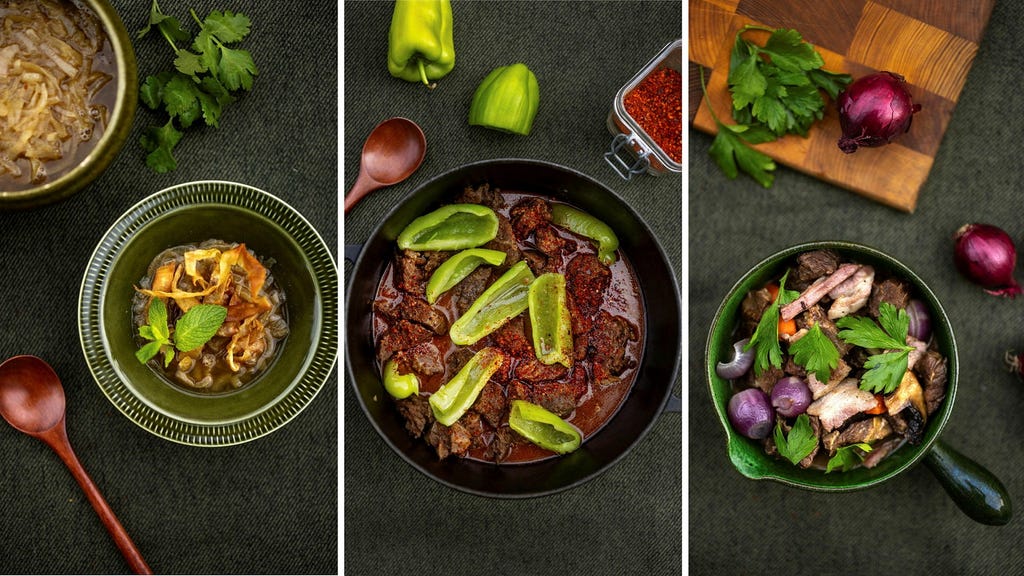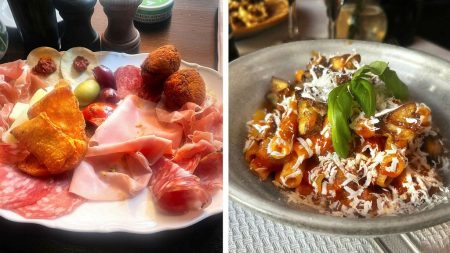When preparing meat for braising or other cooking methods, it’s beneficial to let it rest for at least half an hour beforehand. This technique helps to enhance the flavor profile of the meat, making it more rich and enjoyable once cooked. Allowing the meat to sit allows the juices to redistribute and can lead to a more tender final product. In addition, when setting up your cooking space, employing large pots can significantly facilitate the cooking process. Ample space makes it easier to sauté ingredients properly and ensures thorough mixing while allowing for better oversight during the cooking process. An organized cooking environment ultimately leads to better results in complex dishes like stews and braises.
A key principle to remember for successful long cooking methods is the ”low and slow” approach. This involves maintaining a gentle simmer rather than a vigorous boil. Allowing ingredients to cook slowly helps develop their flavors and creates a more harmonious dish. Regardless of the components in your dish, keeping the temperature low will yield tastier outcomes. This technique not only tenderizes meats but also harmonizes the flavors of the entire dish, resulting in a more intricate and appealing taste. It is crucial to monitor the cooking process without letting it reach a boiling point, as this can lead to uneven cooking and less desirable textures.
One effective tip for enhancing the flavor of soups and stews is to prepare them the day before they are intended to be served. This waiting period allows the flavors to meld together, resulting in a richer and more succulent dish. The resting time also allows for easier handling and reheating, making the overall cooking experience smoother. When it comes time to eat, reheating the dish gives it a great opportunity to regain its aroma and flavor, leading to a more enjoyable eating experience. Making these dishes in advance can save time and effort on the day of serving, allowing for a more relaxed mealtime ambiance.
Another critical aspect to consider with long cooks is proper storage after cooking. It is advisable not to leave the dish in the cooking pot overnight. Instead, transfer leftovers into a separate bowl or container for storage. Many cookware materials, particularly cast iron and aluminum, are not ideal for long-term food storage and could impart unwanted flavors or toxins into the food. Proper transfer will help maintain the quality and safety of the dish. Good food safety practices ensure that the flavors and textures of the dish remain intact for the future enjoyment of your meal.
Further enhancing long-cooked dishes involves considering the complementary sides served alongside them. Look to your refrigerator for accompanying items such as pickled vegetables, chutneys, or sweet and tangy condiment-based relishes. These additions can significantly elevate the dining experience by introducing new flavor dimensions that contrast well with the deep, hearty notes of the main dish. Presenting a variety of small bowls filled with these accompaniments allows guests to customize their plates, enhancing both flavor and presentation. Ultimately, the right sides contribute to a well-rounded meal experience.
Finally, it is essential to exercise caution with salt when cooking soups and stews. As these dishes simmer, water content decreases, leading to higher salinity levels. It’s wise to be mindful of how much salt is added at the beginning of the cooking process since the reduction in liquid can easily concentrate flavors, including saltiness. It’s recommended to taste as you go and adjust seasoning towards the end of cooking to avoid overly salty outcomes. This approach ensures balance in flavor across the entire dish, allowing the natural flavors of the ingredients to shine through without being overshadowed by excessive salt. With these considerations in mind, you can create dishes that are not only flavorful but also perfectly balanced.














